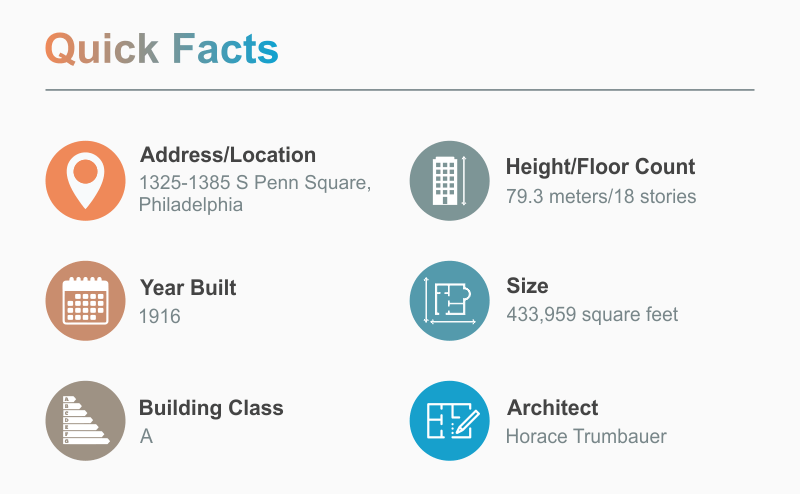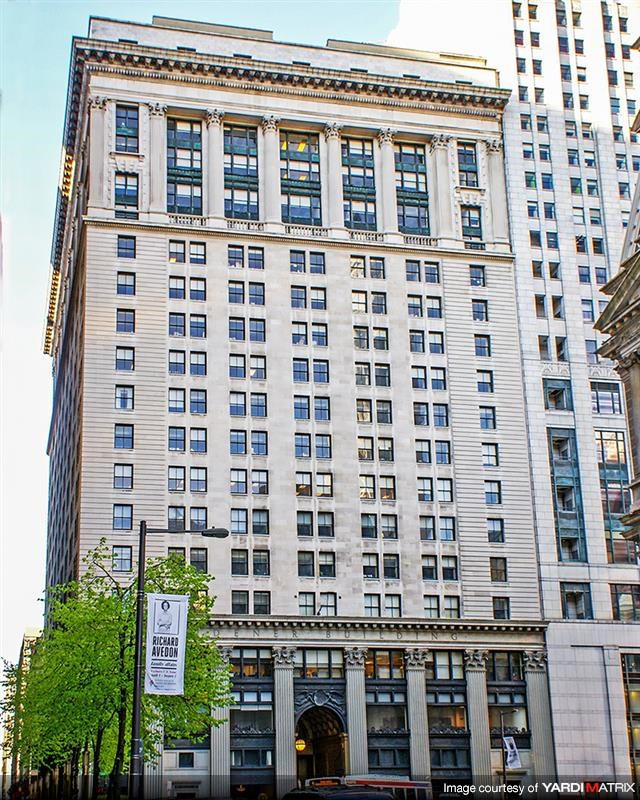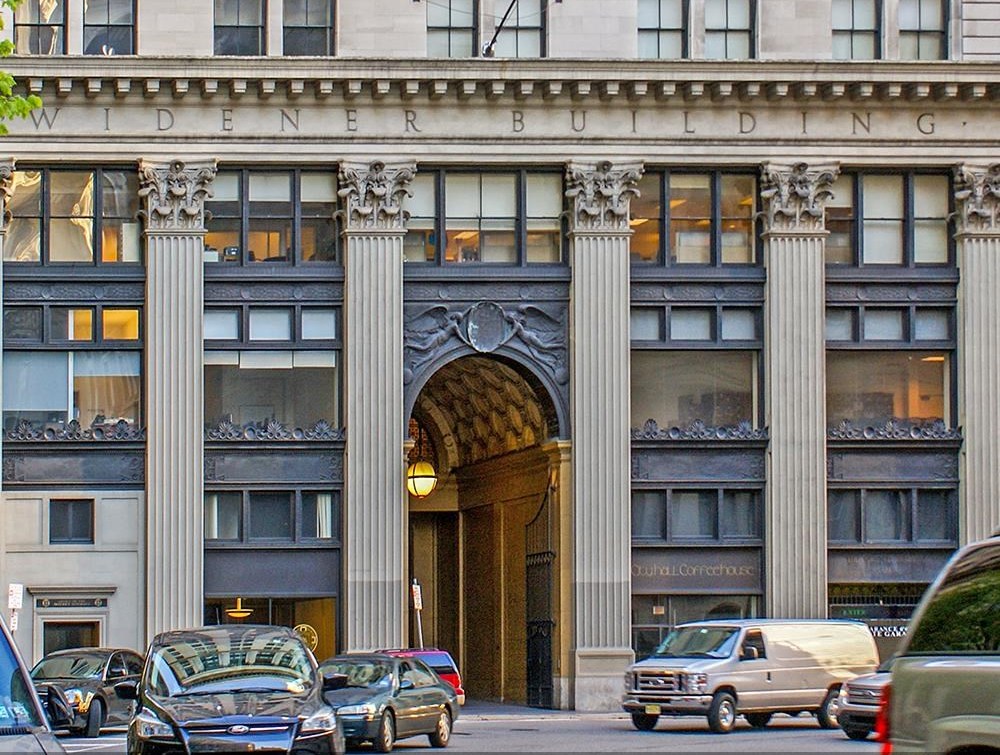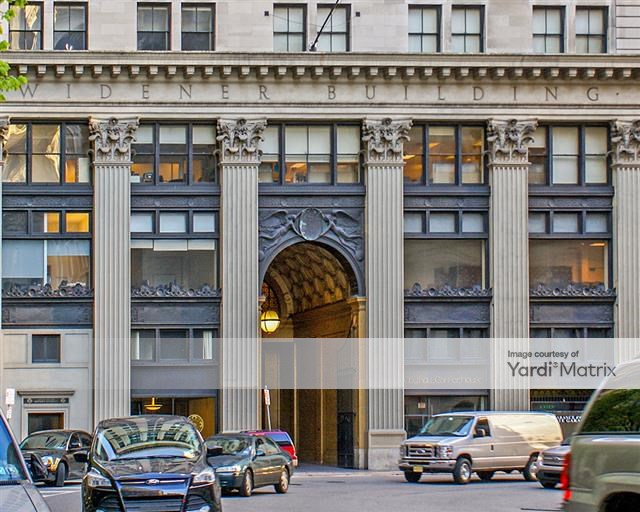
Located at 1 South Penn Square at the very heart of Philadelphia, the Widener Building is an emblematic architectural gem that has been a key part of the cityscape for over a century. The iconic edifice was designed and built by Horace Trumbauer, a local builder-planner, and hailed today as one of the most prominent American architects.
Although these days Trumbauer’s work is highly appreciated, the professional feedback he received during his lifetime wasn’t too positive. After a 6-year apprenticeship and some low-key work in designing middle-class homes, he was awarded his first big project in 1893, when he designed Grey Towers Castle, the high-end estate of the wealthy sugar magnate William Welsh Harrison. But Trumbauer’s success only came after Harrison introduced him to Peter Arrell Browne Widener, for whom he designed a 110-room Georgian revival palace that basically launched his career.
From then onward, he kept on planning and building extravagant residential manors and estates for the upper class for which he didn’t get any professional recognition during his lifetime. Despite this, he was an extremely wealthy man and towards his final years he also designed hotels, office buildings and even the campus of Duke University.
It was Peter A. B. Widener, the head of the Widener family and one of three men who built the Philadelphia tram system, who made Trumbauer a highly sought-after architect in the high-profile circles of the wealthy families of the Gilded Age, hiring him for multiple projects. After designing and building many extravagant mansions for the most prominent families in Philadelphia, Horace Trumbauer was approached by Widener to build an office building at One South Penn Square, on the location of the former Mint Arcade.
Situated at the conjunction of Chestnut Street and Penn Square, the Widener Building was erected in 1916. At that time it stood out from the crowd thanks to its height of nearly 260 feet, its 18 stories and its 433,959-square-foot interior.

The Widener Building, 1 South Penn Square, Philadelphia, PA
The Neo-classical development is estimated to have cost Widener a whopping $5 million at the time of completion. The building had an unbeatable advantage—a strategic location, extremely close to Philadelphia’s geographic center and some important landmarks, such as Penn Square, John Wanamaker’s department store and the site of City Hall.
Throughout the years, the Widener Building has experienced its fair share of alterations and additions on various floors. In the 1960’s, the building’s façade was quite significantly “modernized,” losing some of its main decorative elements in the process. Recent restoration efforts, led by O’Donnell & Naccarato’s chief architect Francis Chauffman, implemented modern services and amenities by adding a new basement parking garage. The building’s original façade was restored to its historical form, along with the iconic 3-story high arcade, that runs through the building from South Penn Square to Chestnut Street.
The building has experienced quite a few interesting happenings in the course of its 100+ years of existence, which includes fires, suicides and even condemnation for its 4th and 5th floors by the FBI, who tried their best to avoid signing a 5-year lease. It gave home to some prominent businesses throughout the years, including the renowned jeweler J. E. Caldwell and Company. Today it still functions as an office building with leasable spaces available to tenants.
Property photos courtesy of Yardi Matrix.













